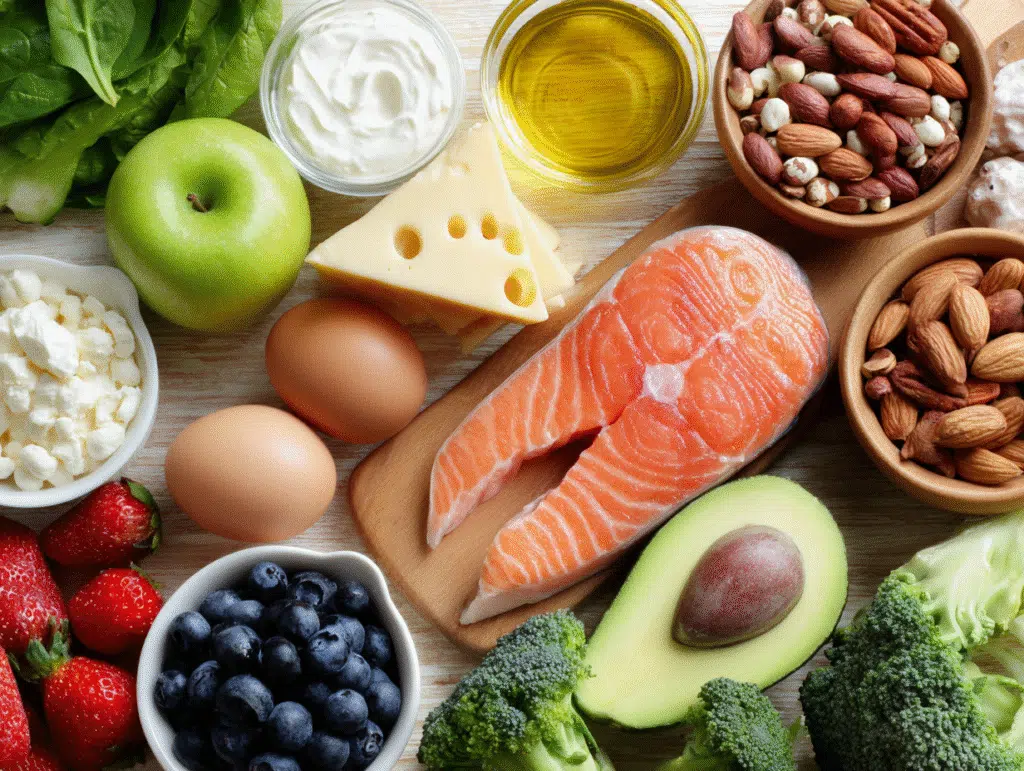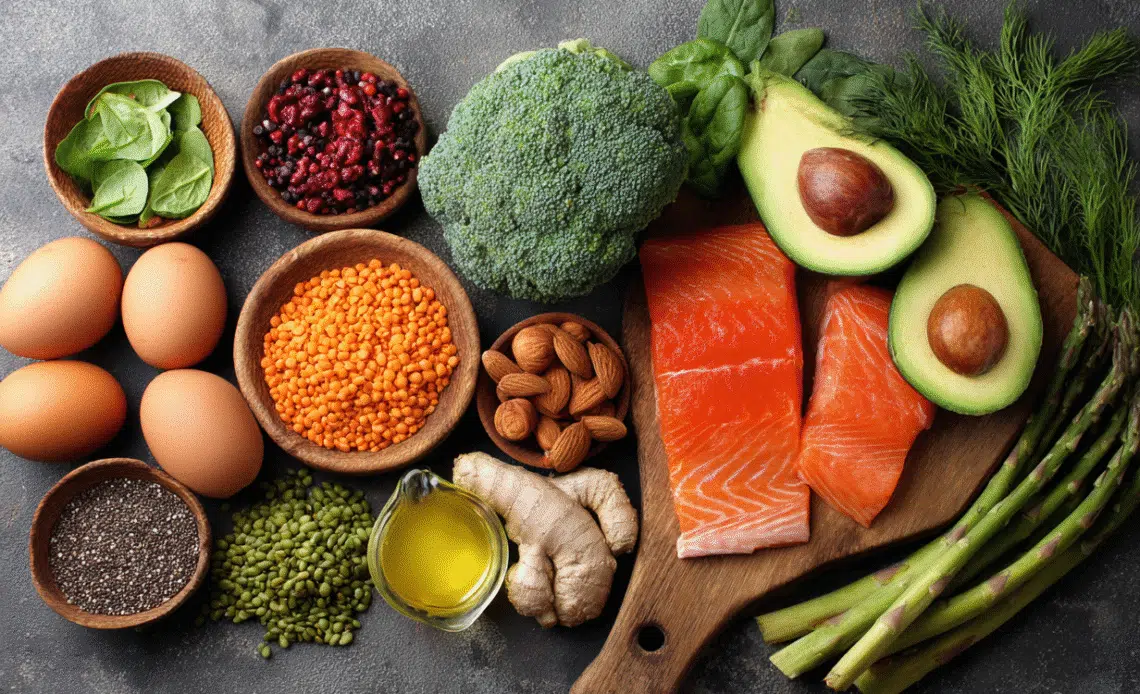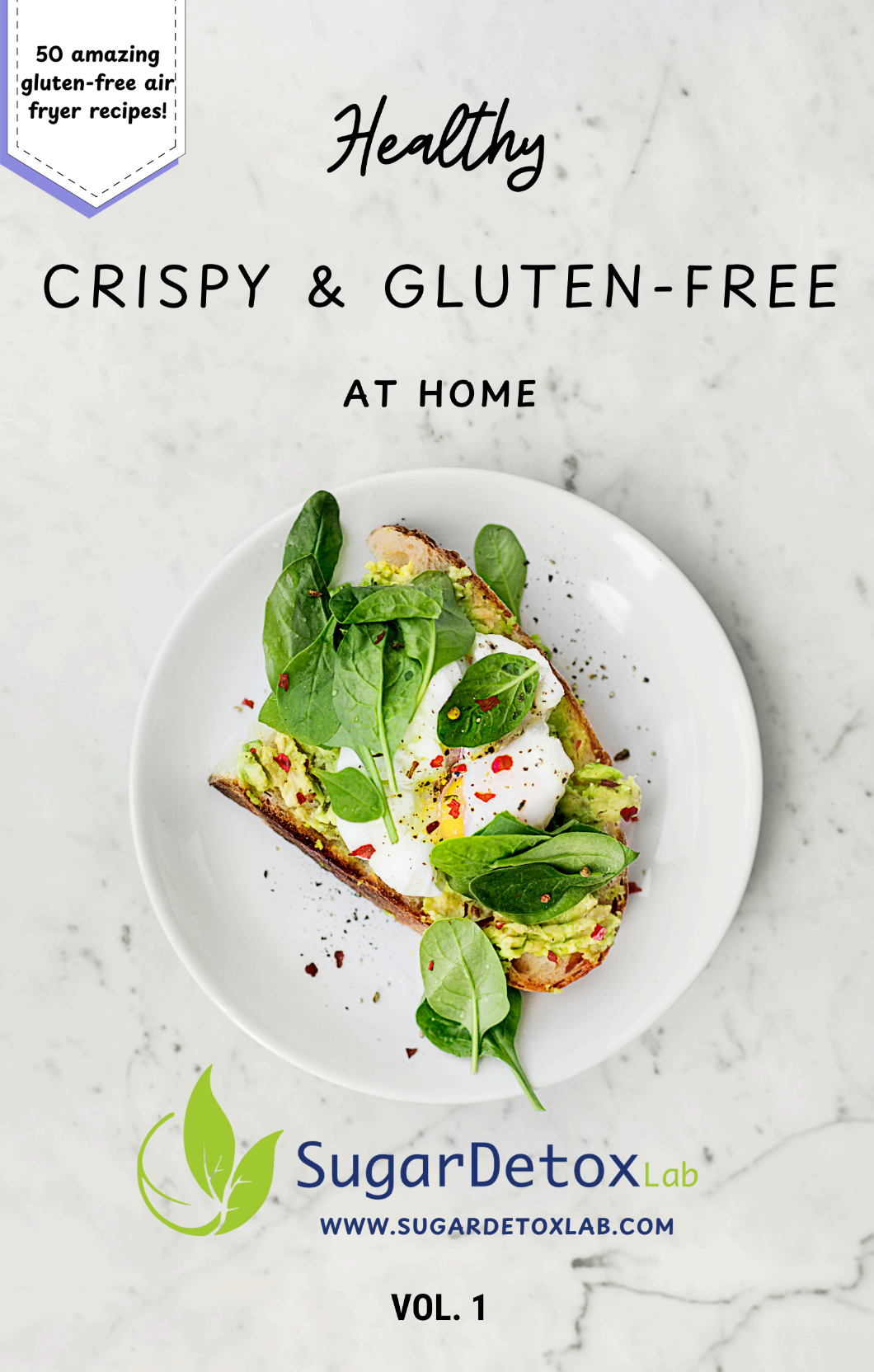Clean-eating foods list is the perfect place to start if you’re ready to reset your diet and focus on whole, nourishing meals. Clean eating doesn’t mean strict rules or deprivation—it’s about choosing foods that are minimally processed, nutrient-dense, and supportive of your overall health. In this guide, I’ll share a complete breakdown of clean-eating foods, step-by-step tips to build meals, and a practical list you can use for grocery shopping.
What Is Clean Eating?
Clean eating is a lifestyle approach to food that emphasizes:
- Whole, natural ingredients
- Minimally processed foods
- Balanced meals with proteins, healthy fats, and complex carbs
- Avoiding added sugars, refined grains, and artificial ingredients
The goal isn’t perfection—it’s making small, consistent changes that nourish your body.
Benefits of Following a Clean-Eating Foods List
Adopting a clean-eating lifestyle offers both short-term and long-term benefits:
- Boosted energy levels thanks to nutrient-rich foods
- Improved digestion from high-fiber fruits, vegetables, and whole grains
- Weight management through balanced, filling meals
- Clearer skin with fewer processed sugars and additives
- Better mood and focus from stable blood sugar levels
Clean-Eating Foods List: The Essentials
Here’s a categorized list to make clean eating simple and approachable:
Fresh Fruits and Vegetables
- Apples, bananas, oranges
- Berries (blueberries, strawberries, raspberries)
- Leafy greens (spinach, kale, arugula)
- Cruciferous veggies (broccoli, cauliflower, Brussels sprouts)
- Sweet potatoes, zucchini, bell peppers
Whole Grains
- Quinoa
- Brown rice
- Oats (steel-cut or rolled)
- Whole-wheat pasta
- Barley and farro
Lean Proteins
- Chicken breast
- Turkey
- Salmon, tuna, and other fatty fish
- Grass-fed beef
- Eggs
- Plant-based proteins (lentils, chickpeas, beans, tofu)
Healthy Fats
- Avocados
- Olive oil
- Nuts (almonds, walnuts, cashews)
- Seeds (chia, flax, pumpkin, sunflower)
- Nut butters (without added sugar or hydrogenated oils)
Dairy and Alternatives
- Plain Greek yogurt
- Cottage cheese
- Unsweetened almond milk, oat milk, or coconut milk
Flavor Enhancers
- Fresh herbs (basil, cilantro, parsley)
- Spices (turmeric, cinnamon, cumin)
- Lemon and lime juice
- Apple cider vinegar

Step-by-Step Guide to Building a Clean-Eating Meal
Step 1: Start with a Base
Choose a foundation like leafy greens, whole grains, or roasted veggies.
Step 2: Add Lean Protein
Include chicken, fish, tofu, or beans for satiety and muscle support.
Step 3: Incorporate Healthy Fats
Top your meal with avocado slices, olive oil drizzle, or a sprinkle of seeds.
Step 4: Add Colorful Veggies
Fill half your plate with seasonal, colorful vegetables for vitamins and minerals.
Step 5: Flavor Naturally
Use herbs, spices, citrus, and vinegars instead of sugary sauces.
Practical Tips for Clean Eating
- Shop the perimeter: Grocery store perimeters usually have fresh produce, meats, and dairy.
- Read ingredient labels: Aim for short, recognizable ingredient lists.
- Cook at home: You control the ingredients and portion sizes.
- Meal prep ahead: Pre-cut veggies, cook grains, and batch proteins for the week.
- Hydrate smartly: Drink water, herbal teas, or infused water instead of sodas.
Clean-Eating Grocery List (Printable Version Idea)
Here’s a quick, easy-to-use version you can take shopping:
- Produce: spinach, kale, berries, apples, carrots, zucchini
- Proteins: salmon, chicken breast, eggs, beans, lentils
- Grains: quinoa, oats, brown rice, whole-wheat pasta
- Fats: avocado, olive oil, chia seeds, almonds
- Dairy/Alternatives: plain Greek yogurt, unsweetened almond milk
- Pantry Staples: herbs, spices, apple cider vinegar
FAQs About Clean-Eating Foods
1. What foods should I avoid when eating clean?
Avoid highly processed foods like packaged snacks, sodas, refined grains, fast food, and anything with artificial additives or excessive added sugar.
2. Can I eat bread on a clean-eating diet?
Yes, but choose whole-grain or sprouted bread without added sugar or preservatives.
3. Is clean eating good for weight loss?
Yes. Clean eating helps control calories naturally by focusing on whole, nutrient-dense foods that keep you full longer.
4. Are dairy products allowed in clean eating?
Yes, but stick to minimally processed dairy like plain Greek yogurt or cottage cheese. Unsweetened plant-based alternatives are also great options.
5. How do I start clean eating on a budget?
Buy seasonal produce, shop sales, purchase in bulk (especially grains and legumes), and cook at home. Costco and local farmers’ markets often have great deals.
6. Can I still have coffee on a clean-eating diet?
Absolutely—just avoid excessive sugar and flavored creamers. Opt for black coffee or add a splash of unsweetened plant-based milk.
Conclusion: Start Your Clean-Eating Journey Today
Following a clean-eating foods list makes healthy eating simple and sustainable. By focusing on whole foods, lean proteins, healthy fats, and fresh produce, you’ll feel more energized, balanced, and nourished.






